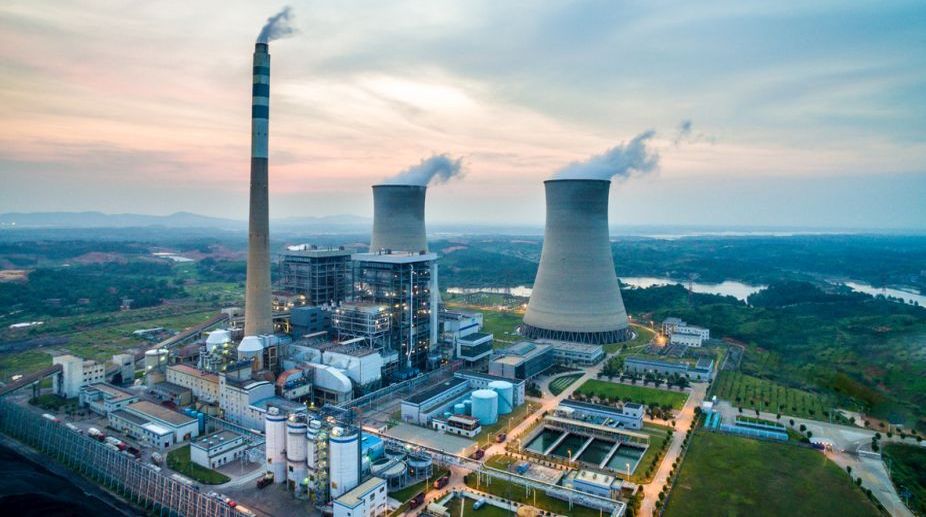Nuclear Power
The recent test by India of a missile equipped with multiple independent targetable re-entry vehicles (MIRVs) may be attributed as a formidable milestone for nuclear power in Asia.

Representational image (Photo: Getty Images)
To meet its energy requirement, India is currently looking at new locations to build up its nuclear power production. Nuclear power is currently India’s 5th largest source of electricity after Coal (61 per cent), Natural Gas (7.6 per cent), Hydroelectric (14 per cent), other renewables (14 per cent) and Nuclear (3.5 per cent). India aims to increase the percentage of nuclear power production in the overall energy supply to 9 per cent by 2026. It is part of India's plan to expand nuclear generation capacity to 63 gigawatts by 2032 from 6.8 gigawatts presently.
As of 2016, India has seven nuclear power plants, with an installed capacity of 6.80 GW and producing 34644.45 GWh of electricity. India is planning five more nuclear plants – in Jaitapur in Maharashtra, Kovvada in Andhra Pradesh, Chutka in Madhya Pradesh, Banswara in Rajasthan and Gorakhpur in Haryana. This is expected to generate an additional 4.3 GW of power. The new sites India is looking for are in addition to the already identified sites.
India has had issues about its nuclear energy sites in the past, such as the local protests surrounding the Kudankulam Nuclear Power Plant in Tamil Nadu. It has had to back out of a couple of sites due to these protests. Therefore, the objective of seeking new sites is to have them away from the sea (to prevent another Fukushima disaster) and in distant locations to prevent a huge public uproar. These new sites would supplement the existing list.
Advertisement
In anticipation of these new sites, the Modi Government has been busy signing Civil Nuclear Agreements for the purchase of uranium. In 2014, 2015 and in 2016, India signed agreements with Australia, the UK and Japan respectively for purchase of uranium for manufacturing nuclear power.
Speaking of public uproar, following the Fukushima nuclear disaster in 2011, there was a combined effort to block Indian nuclear projects. These protests gained popularity throughout the country. A couple of protests that have received significant traction in the media are against the French-partnered Jaitapur nuclear project in Maharashtra and the Russian-partnered Kudankulam project in Tamil Nadu. Other proposed power plants have also been halted due to protests. The former chairman of the Atomic Energy Commission of India said in a lecture said that the scheme for the Haripur Nuclear Power Plant in West Bengal has not completely been deleted though appropriate background work was to be a decisive factor in the future of the power plant. However, the lifeline of the power plant is still hanging more than three years after plans were halted.
There have been other such power plants as well, like the Mandla Nuclear Power Project in Madhya Pradesh. This was proposed by the Central Government in 1982. The power plant is located in the catchment area of the Bargi dam on the Narmada River. The compensation received by the local villagers is pennies compared to the prices of land in the area currently. Especially so, as a Hindustan Times report mentioned, a farmer with 20 acres who lost 17 acres for the dam construction now may lose the remaining three acres for the Nuclear Project.
India has been bent on exponentially increasing its energy production. It plans to expand its nuclear energy capacity tenfold. These plans however have been hampered due to delays in construction and suppliers’ concern over the liability laws in India in case of a disaster. To solve the first problem, as mentioned, sites are being picked in places with low populations. As for the liability laws, the law allows for claims from the companies that are setting up the power plant. This has discouraged companies from General Electric to Toshiba from setting up plants.
Toshiba said that it would only set up six reactors in India if there is a change in the nuclear liability law. It cannot be expected to take up the risk of building the new nuclear plants, the company said, following a $6.3 billion write-down. In the US, the Price–Anderson Nuclear Industries Indemnity Act, first passed as early as 1957, restricts liability of nuclear power plant operators. The object of the Act is to partially compensate the plant operators against claims arising from nuclear incidents to ensure that compensation is provided to the public. The Act creates a no-fault insurance-type system with an industry-funded piggy bank of around $12.6 billion (as of 2011). Any claim above this amount is to be covered by the US government.
Nevertheless, India is proceeding with the domestic projects and looking for new sites. It has provisionally selected one site in the state of Haryana that is to be finalised in the next five years. Many Indian companies have shown an interest in collaborating in projects with the GOI monopoly company, the Nuclear Power Corporation of India.
Specifically, the Oil and Natural Gas Corporation of India’s chairman has said that ONGC would be interested in exploring energy production opportunities in the nuclear sector. However, more attention needs to be paid to siting nuclear power plants in places that will not lead to popular resistance. Additionally, if India wants to invite foreign companies, it will have to enact laws like the Price-Anderson Act to reduce the liability that these foreign companies face.
The writers are, respectively, Professor of Law and a student at the Jindal Global Law School, Sonipat.
Advertisement